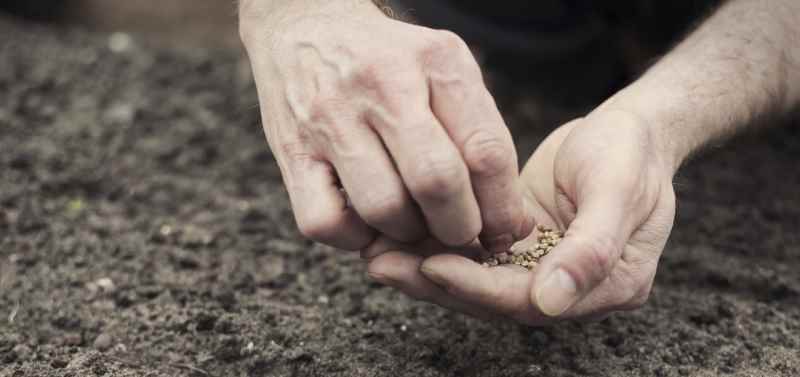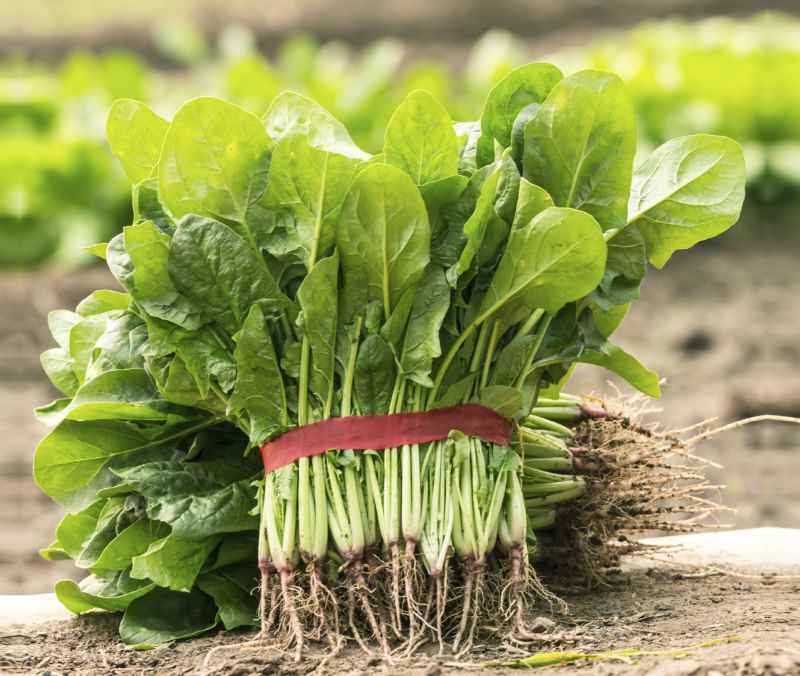
Choosing a plot
While spinach can tolerate cold weather it also enjoys being positioned in full sun. It should be planted in soil that drains well as the plants survive well in moist, but not soggy conditions. Soil should be slightly acidic, with a pH of 6.5-7.0 being favoured. Loosen the soil about a foot downwards before planting the seeds, as spinach forms deep taproots.
Even if you don’t have space in your garden to grow spinach, this plant can also be grown in containers, and is a popular choice for balcony gardeners. Although salad trays as shallow as 3½ inches (9cm) can yield spinach plants, they prefer deeper trays, at least 6 inches (15cm) deep.
Planting seeds
 When planting seeds into the ground, sow as early as six weeks before the last frost. Drop the seeds about ½in (8mm) deep into the ground. Sow the seeds fairly heavily and be prepared to thin the plants to 4-6in (10-15cm) apart once two leaves have formed. Spread mulch over the rows of spinach plants to suppress the weeds. It is possible to start spinach plants as seedlings, but it is easy to damage the roots in the process, hence why it is often easier to start growing from seeds.
When planting seeds into the ground, sow as early as six weeks before the last frost. Drop the seeds about ½in (8mm) deep into the ground. Sow the seeds fairly heavily and be prepared to thin the plants to 4-6in (10-15cm) apart once two leaves have formed. Spread mulch over the rows of spinach plants to suppress the weeds. It is possible to start spinach plants as seedlings, but it is easy to damage the roots in the process, hence why it is often easier to start growing from seeds.
If planting into trays, plant seeds 3-4in (7-10cm) apart. If more than one seedling comes out of the same hole, it is best to thin to just one seedling or they will compete for space, and this will stunt both growth and yield.
Nurturing your seeds
 Spinach needs to be kept well-watered, but not too soggy. Watering helps to cool the soil, which is good for spinach plants. If temperatures happen to rise above 26̊C, cover the soil with a shade cloth to keep the plants cool.
Spinach needs to be kept well-watered, but not too soggy. Watering helps to cool the soil, which is good for spinach plants. If temperatures happen to rise above 26̊C, cover the soil with a shade cloth to keep the plants cool.
Spinach is generally resistant to pests and diseases. However, slugs and snails can find it difficult to resist leafy spinach, and can leave big holes in your leaves. Laying sand or rough surfaces such as broken shells around your spinach plants can reduce the damage to the leaves.
Harvesting Spinach
Spinach is ready to harvest as soon as the leaves are big enough to eat, usually at about 3-4in in length. This is generally 6-8 weeks after harvesting. You can either harvest by pulling the entire plant out of the ground, which is not difficult as the roots are weak, or by snipping off the outer leaves to allow the smaller inner leaves to grow up more fully; this also lengthens the harvesting period.






 Looking for our products in a store near you?
Looking for our products in a store near you?
